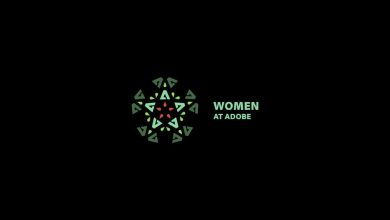How video supercharges virtual selling

In 2020 and beyond, video has become the most popular medium of face-to-face communication for brands to market, build trust and sell.
Contents
Supercharge brand connections in 2021 with video
Even before COVID-19 entered our lives, innovative companies around the globe were awakening to the power of video for remote sales and team collaboration. The onset of the pandemic has sent that into overdrive.
Most companies today are working from home, social distancing, and facing travel restrictions. To comply with restrictions that have become the new normal of doing business in 2020 and beyond, marketers are turning to video at a rapid pace. As of January 2021, 91 percent of marketers feel the pandemic has made video even more important for brands.
Video builds strong connections
The concepts of selling with video are not new, and the global pandemic has only accelerated these trends. Businesses that traditionally relied heavily on traditional face-to-face selling are now looking to build their digital foundation, and use video as a way of standing out from the noise.
In short, it is getting harder for sellers to stand out in today’s business world. The tools and tactics they have traditionally used, such as email campaigns, are becoming less effective with consumers receiving nearly twice the volume, and response rates decreasing by 30 percent.
Businesses are waking up to the cost savings they can reap through virtual selling tactics. They are now realizing they can achieve the same outcome — acquire just as many new customers, and at a lower cost, by using readily available video tools such as LinkedIn Sales Navigator, Zoom, and Vidyard.
Video is playing an increasingly important role in virtual selling. A recent report from global strategy firm McKinsey found that more than three-quarters of buyers and sellers now prefer digital self-serve and remote human engagement over face-to-face interactions. The use of video as a selling tool is up 41 percent since the pandemic hit. Revenue created by video communications has increased by 69 percent since April 2020. 43 percent of B2B revenue now comes from video and eCommerce — more than any other channel in the business.
Customers are sending a clear message: they prefer video to phone calls and in-person interaction. As sellers, we need to align our methodologies to the way our prospects want to be engaged with. Customers may not be able to meet in person now, but their expectations that a brand cares about their needs and challenges remain unchanged.
Video communication allows a brand to humanize itself while building genuine relationships and trust through every stage of the customer journey.
Align virtual communications to buyers’ needs with asynchronous video
Video may be the most effective way to connect with customers today, but what if they aren’t available to jump on that video call? With all the extra complications and obligations that come with working from home, getting time on a person’s calendar is not easy.
This is where asynchronous video is immensely valuable. Brands can still create that human connection, but the content can be viewed at a consumer’s convenience and on their own timetable.
6 tips to insert asynchronous video into your sales strategy:
On average, 6.8 people are now involved in enterprise buying decisions. If decision-makers cannot make an important meeting, circulate a video recapping the high-level points so everyone feels involved and informed.
Build trust and connection by sending personal videos to decision-makers addressing their specific pains and requirements so they feel heard.
When you send off a proposal, include a video that walks everyone through the key details. This also allows you to show the value you provide.
If a prospect goes dark, try sending a video to unstick your deal. It is harder for people to ghost someone who adds a personal message with a video.
Send custom demos to prospects to explain how solutions or particular features work, and show how your tools and services would solve their specific business challenges.
Run team meetings more efficiently by circulating an asynchronous video ahead of time. This allows people to digest and prep beforehand so precious live meeting minutes can be spent on Q&A.
Utilizing video in daily workflows
Adopting video into your company’s processes and employee work-life doesn’t have to be difficult. With tools like Vidyard, the learning curve is minimal to none. Vidyard also connects to all the tools you use in your remote workflow — like your Chrome browser, or marketing automation platforms like Marketo Engage.
Video plays an increasingly prominent role in the future of work. It is certainly transforming the way brands engage, sell, and communicate with prospects and customers.
Nothing will fully replace in-person relationship building in any aspect of business. But at a time when face-to-face communication is simply not possible, video helps brands deliver great customer experiences, and it is the next best thing to being with them in person.
Source : Adobe








